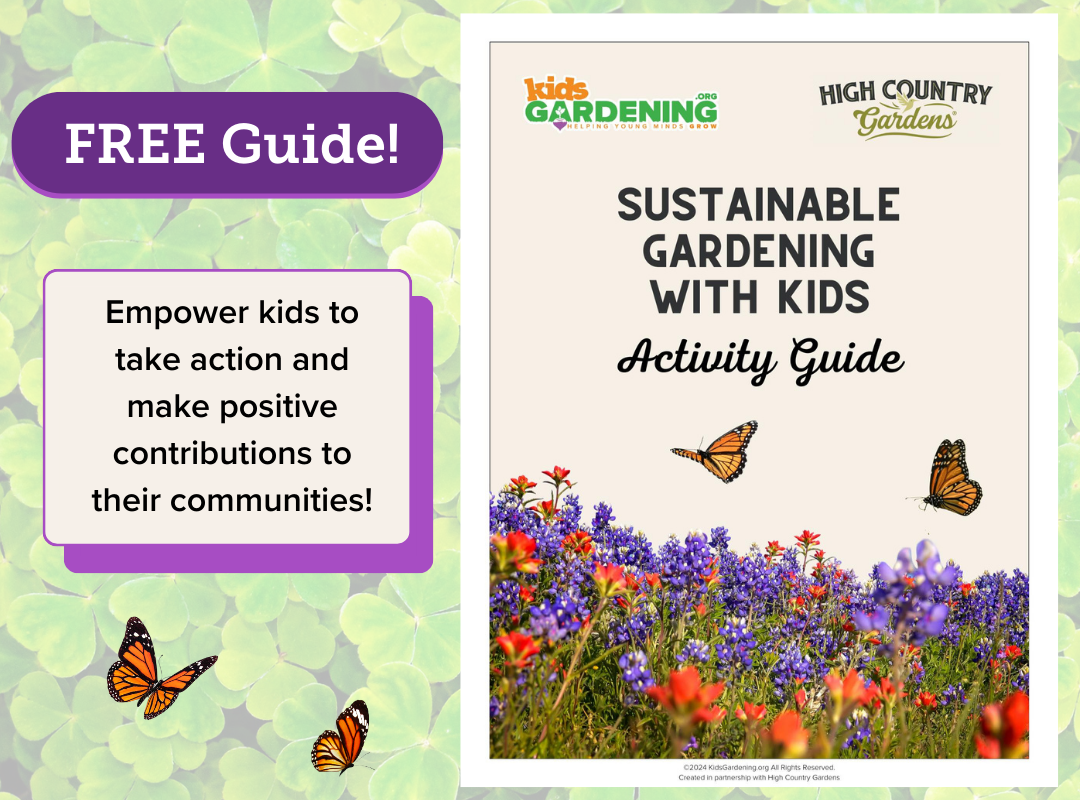Finding the resources you need to begin and maintain a school garden is always a challenge, but fortunately there are many places to look for support. You need two different types of resources for your garden. First you need physical supplies including items like tools, soil, plants, and seeds. Equally important, the second resource you need is people. To be successful, you will need to find volunteers who can help in the garden not only on planting day, but also with maintenance and programming on a regular basis. Here are some suggestions for the basic tools and materials you’ll need to get started in the garden. See Valuing Volunteers for information on cultivating this valuable human resource.
GARDEN TOOLS AND MATERIALS
Plants and Soil
The most essential supply you need to begin a school garden is plants. You can either obtain seedlings (small plants) to transplant into your garden, or plant directly from seed. Seeds are usually cheaper and often easier to obtain through donations, but planting seedlings can give you a jump-start on the season. Also, there are some plants that are challenging to grow from seed (like strawberries and many herb plants), so obtaining seedlings is the best option for success in the garden. If you have adequate light (from sunny windows or grow lights), growing your own seedlings is an option.In addition to plants, soil is another required element for your garden. A small handful of schools are blessed with good soil for in-ground gardens. The majority of schools will either need to amend existing soils or, more often than not, build raised beds or purchase containers and then bring in good gardening soil. As the foundation of the garden, investing in high quality soil and raised beds or containers made from durable materials is a very wise use of funds and will contribute to the sustainability of the gardening program over time.
Tools
“Use the right tool for the job” is the old motto and it’s as true for gardening as for any project. When selecting tools, look for durable, well-made, properly sized products. Avoid cheap plastic tools that were crafted to be toys because they break easily. Consider purchasing kid-sized tools for your students, especially for elementary school gardens.
Here’s a list of essentials:
- Hoe –for weeding, making planting furrows
- Metal garden rake –for smoothing soil
- Shovel –for turning soil, building beds, digging planting holes
- Hand trowels –for digging planting holes and removing deep-rooted weeds 3-pronged hand cultivators –for weeding and cultivating soil in small areas
- Hose –long enough to reach easily from spigot to far end of garden with a wand or nozzle to direct water flow Watering can – small enough for kids to carry when full
- Garden cart or wheelbarrow –for moving compost, plants, mulch
Materials:
- Compost –to build soil fertility and quality
- Garden stakes and row markers –to keep track of where and what you plant
- String and tape measure –for measuring spacing between rows, beds, seeds, and so on
- Mulch material –to cover beds and pathways
- Fertilizer –to maximize plant health and crop yields
There are other tools and materials that you may need depending on the size of your garden and what you plan to grow. For instance, a large garden space may need a tiller (which could be borrowed or rented). If you plan to grow climbing plants, you may need to build a trellis, and plants like tomatoes may need stakes or cages. You may want to purchase a compost bin to contain your garden debris as you compost it. Review your design plans as you make your needs list, and try to make it as accurate as possible.



